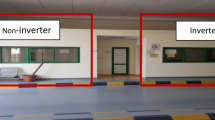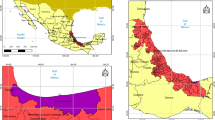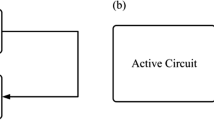Abstract
A mathematical model is developed to simulate the performance of an R-744 (CO2) based air conditioning system operating under transcritical conditions, but near the critical point. The system is designed for summer, and operates in a transcritical mode under the designed summer conditions. However, as the ambient conditions change from summer to winter, the system can undergo a transition from transcritical to near critical and finally subcritical mode. The mathematical model is developed to analyze the effects of gas cooler air flow rate and refrigerant charge on the transition of cycle. The model is validated with experimental results. Further, the influence of refrigerant charge, gas cooler air flow rate on transition of the cycle from transcritical to subcritical mode is analyzed under different ambient conditions. Results show that decrease in total charge, ambient temperature or increase in gas cooler air flow rate, independently or in combination, can lead to a transition from transcritical to subcritical mode. Further, by increasing the refrigerant charge beyond 1100 gm, the system can be made to operate in transcritical mode when the ambient temperature is below 17°C. It is expected that the study is useful in the design of suitable control systems for optimal operation of the system subjected to widely varying ambient conditions.













Similar content being viewed by others
Abbreviations
- bw,m :
-
Slope of saturated air curve at mean water film temperature (kJ/kg-K)
- bR :
-
Slope of saturated air curve at wall and refrigerant temperature difference (kJ/kg-K)
- C:
-
Capacity ratio
- Cp :
-
Specific heat (kJ/kg-K)
- COP:
-
Coefficient of performance
- dAair :
-
Air side total area of tube for an element (m2)
- dAfin :
-
Area of the fin for an element (m2)
- dAtube,o :
-
Outside area of tube for an element (m2)
- dAref :
-
Refrigerant side heat transfer area of tube for an element (m2)
- h:
-
Enthalpy (kJ/kg)
- htc:
-
Heat transfer coefficient (kW/m2-K)
- kw :
-
Thermal conductivity of water film (kW/m-K)
- LMTD:
-
Log mean temperature difference (°C)
- LMED:
-
Log mean enthalpy difference (kJ/kg)
- \( \dot{\text{m}}\) :
-
Mass flow rate (kg/s)
- N:
-
Number of transfer unit
- P:
-
Pressure (kPa)
- PDR:
-
Piston displacement rate (m3/s)
- Qgc :
-
Heat rejection rate in gas cooler (kW)
- Qev :
-
Cooling capacity of evaporator (kW)
- t:
-
Temperature (°C)
- tsup :
-
Degree of superheat (K)
- U:
-
Overall heat transfer coefficient (kW/m2-K)
- \(\dot{V}_{gc}\) :
-
Volumetric air flow rate of gas cooler (m3/s)
- Wcomp :
-
Compressor power (kW)
- yw :
-
Water film thickness (m)
- ηoverall :
-
Overall surface efficiency for dry surface
- ηfin ,wet :
-
Efficiency of fin for wet surface
- ε:
-
Effectiveness of heat exchanger for an element
- air,sat,ref:
-
Evaluated for saturated air at refrigerant temperature
- air,sat,wall:
-
Evaluated for saturated air at tube wall temperature
- air,sat,w,m:
-
Evaluated for saturated air at mean water film temperature
- air,wet:
-
Evaluated for air at film temperature
- air,in:
-
Evaluated at air inlet condition
- air,out:
-
Evaluated at air outlet condition
- ev:
-
Evaporator
- gc:
-
Gas cooler
- ref:
-
Refrigerant
- w,m:
-
Evaluated at mean water film temperature
- wall :
-
Evaluated at tube wall
References
Austin B T and Sumathy K 2011 Transcritical carbon dioxide heat pump systems: A review. Renew. Sustain. Energy Rev. 15: 4013–4029
Ge Y T and Tassou S A 2009 Control optimization of CO2 cycles for medium temperature retail food refrigeration systems. Int. J. Refrig. 32: 1376–1388
Melo C and Montagner G P 2010 Exploring the Performance Characteristics of CO2 Cycles in a Breadboard-Type Test Facility. In: Int. Refrig. Air Cond. Conference, Purdue Univ
Boccardi G, Calabrese N, Celata G P, Mastrullo R, Mauro A W, Perrone A and Trinchieri R 2013 Experimental performance evaluation for a carbon dioxide light commercial cooling application under transcritical and subcritical conditions. Appl. Therm. Eng. 54: 528–535
Sánchez D, Patiño J, Sanz-Kock C, Llopis R, Cabello R and Torrella E 2014 Energetic evaluation of a CO2 refrigeration plant working in supercritical and subcritical conditions. Appl. Therm. Eng. 66: 227–238
Shao L L and Zhang C L 2016 Thermodynamic transition from subcritical to transcritical CO2 cycle. Int. J. Refrig. 64: 123–129
Sharma D K, Hazarika M M and Ramgopal M 2023 Optimum discharge pressure of CO2 based refrigeration cycles operating under subcritical and transcritical conditions. Int. J. Ambient Energy 44: 1–26
Sharma D K, Pegallapati A S and Ramgopal M 2023 Performance of a CO2 based transcritical air conditioning system under summer and winter conditions. Therm. Sci. Eng. Prog. 41: 101847
Holman J P and Bhattacharyya S 2008 Heat transfer. 9th edn. Tata McGraw-Hill, New Delhi, p 543
Kondou C and Hrnjak P 2011 Heat rejection from R744 flow under uniform temperature cooling in a horizontal smooth tube around the critical point. Int. J. Refrig. 34: 719–731
Pongsoi P, Promoppatum P, Pikulkajorn S and Wongwises S 2013 Effect of fin pitches on the air-side performance of L-footed spiral fin-and-tube heat exchangers. Int. J. Heat Mass Transf. 59: 75–82
Incropera F P, Dewitt D P, Bergman T L and Lavine A S 2011 Introduction to heat transfer. 7th edn. Wiley, USA, p 523
Threlkeld J L 1998 Thermal environmental engineering. 3rd edn. Prentice-Hall, New Jersey, pp 309–320
Cheng L, Ribatski G and Thome J R 2008 New prediction methods for CO2 evaporation inside tubes: Part II—An updated general flow boiling heat transfer model based on flow patterns. Int. J. Heat Mass Transf. 51: 125–135
Cheng L, Ribatski G, Moreno Q J and Thome J R 2008 New prediction methods for CO2 evaporation inside tubes: Part I – A two-phase flow pattern map and a flow pattern based phenomenological model for two-phase flow frictional pressure drops. Int. J. Heat Mass Transf. 51: 111–124
Pitla S S, Groll E A and Ramadhyani S 2002 New correlation to predict the heat transfer coefficient during in-tube cooling of turbulent supercritical CO2. Int. J. Refrig. 25: 887–895
Nuntaphan A, Kiatsiriroat T and Wang C C 2005 Heat transfer and friction characteristics of crimped spiral finned heat exchangers with dehumidification. Appl. Therm. Eng. 25: 327–340
McQuiston F C, Parker J D and Spitler J D 2005 Heating, ventiling and air conditioning, analysis and design. 6th edn. Wiley, USA, p 521
Wang S, Tuo H, Cao F and Xing Z 2013 Experimental investigation on air-source transcritical CO2 heat pump water heater system at a fixed water inlet temperature. Int. J. Refrig. 36: 701–716
Rouhani S Z and Axelsson E 1970 Calculation of void volume fraction in the subcooled and quality boiling regions. Int. J. Heat Mass Transf. 13: 383–393
Holman J P 2012 Experimental methods for engineers. 8th edn. McGraw-Hill, New York, p 64
Hazarika M M, Ramgopal M and Bhattacharyya S 2018 Studies on a transcritical R744 based summer air-conditioning unit: Impact of refrigerant charge on system performance. Int. J. Refrig. 89: 22–39
Author information
Authors and Affiliations
Corresponding author
Rights and permissions
About this article
Cite this article
Sharma, D.K., Pegallapati, A.S. & Ramgopal, M. Studies on an R-744 based air conditioning system operating near critical point. Sādhanā 48, 177 (2023). https://doi.org/10.1007/s12046-023-02230-z
Received:
Revised:
Accepted:
Published:
DOI: https://doi.org/10.1007/s12046-023-02230-z




